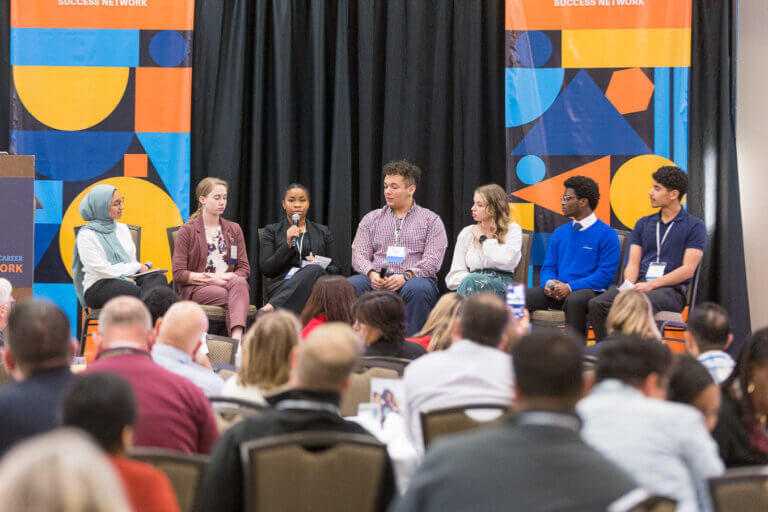EdSystems applauds the adoption of the Illinois Board of Higher Education’s new 10-year strategic plan, A Thriving Illinois: Higher Education Paths to Equity, Sustainability, and Growth. While this plan results from a nearly year-long effort led by the Illinois Board of Higher Education, Illinois Community College Board, and Illinois Student Assistance Commission, we are excited to see the many ways in which it builds from long-standing efforts in Illinois. Several members of the EdSystems team had the privilege of participating in three of the Design Work Groups: Meeting the State’s Workforce Needs; Supporting the High School, College, and Career Connection; and Close Equity Gaps.
Here are some of the elements of the plan that we are most excited about:
Centering Equity for a Thriving Illinois
The plan opens with the statement, “A thriving Illinois has an inclusive economy and broad prosperity with equitable paths to opportunity for all, especially those facing the greatest barriers.” As we’ve been learning in our racial equity work, to ensure all Illinoisans can reach their full potential, it is critical to center equity as a core value to identify systems of oppression and how to dismantle them. As our work to develop postsecondary attainment equity targets with the P-20 Council continues, we see this alignment in values as a critical juncture to examining and changing policy and practice in the service of equitable outcomes.
Building a Better P-20 Pipeline
In several ways, this strategic plan builds from valuable frameworks such as the Postsecondary and Workforce Readiness (PWR) Act to enhance the pipeline from secondary to and through postsecondary education. Here are some highlights:
- Expanding equitable early college credit access (Equity Strategy #6): As we’ve emphasized before, intentionally scaling dual credit opportunities is a key strategy for accelerating success for all students. Early college access is especially powerful when strategically linked to college and career pathways, as we’ve outlined in our Perkins Model Programs of Study.
- Enhancing pathways to college and career: Implicit in the plan’s emphasis on educator pipeline efforts (Growth Strategy #7) are strategies such as Scaling Education Pathways in Illinois (SEPI) and broader efforts to align secondary and postsecondary. We also see the currency for College and Career Pathway Endorsements offered by postsecondary institutions as a critical step in bridging secondary and postsecondary education for Illinois students.
Ensuring Alignment to Economic Development and Labor Market Trends
We are excited to see how this plan emphasizes alignment to labor market needs, to ground programming and system development.
- Alignment to business and labor market needs: The plan outlines ways to better identify and align programming to meet employer needs by creating a Business and Employer Advisory Council (Growth Strategy #2), targeted supply/demand analysis, and regional partnership work (Growth Strategy #3). As we learned through developing the Perkins Model Programs of Study, conducting thoughtful labor market analysis and employer engagement can help ensure that college and career pathways prepare individuals to enter into growing jobs with family-sustaining wages.
- Prepare Illinoisans for success in the workforce: The plan envisions considering how teaching and learning can be enhanced with work-based and competency-based models to better prepare Illinoisans for their careers (Growth Strategy #6), as well as considering how private business and vocational schools can play a critical role in the system (Growth Strategy #9). We are excited to build from existing efforts in the secondary space in work-based learning and competency-based education, as well as our research into sub-associate pathways through Pro Path Illinois and Middle Skills Pathways in Chicago, to better understand how to enhance the accessibility and growth potential of pathways for all Illinoisans.
We are excited to see how these proposed strategies come to life in the coming months and years and look forward to collaborating closely with the Illinois Board of Higher Education, Illinois Community College Board, Illinois Student Assistance Commission, and others to bring innovation for equity to scale. One key mechanism for driving implementation in these efforts will be to leverage existing collaboratives, such as the Illinois 60 by 25 Network, to translate the policy vision into on-the-ground practice in communities across the state. We will continue to focus on alignment across policy frameworks such as this plan and the PWR Act to best leverage resources to achieve our shared goals.


